Atlantic Monthly Contributors's Blog, page 116
July 22, 2016
Leslie Jones and the Power of Speaking Up
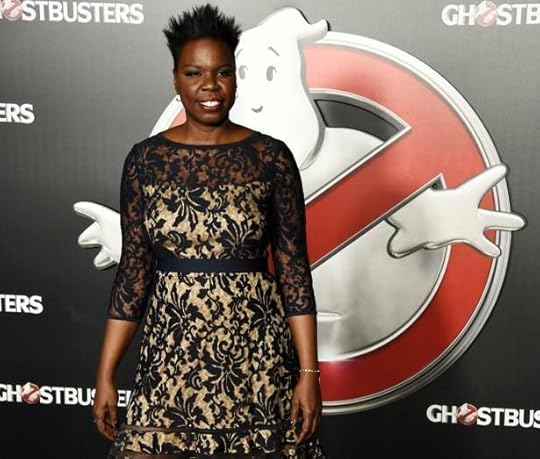
Leslie Jones—the star of Ghostbusters and, this week, both a victim of hate speech and a champion of fighting back against it—appeared on Late Night With Seth Meyers Thursday night. The pair’s conversation, unsurprisingly, focused on the week’s news: the banning of @Nero (otherwise known as Milo Yiannopoulos, the self-proclaimed “most fabulous supervillain on the internet”) from Twitter after he helped foment a racist, sexist harassment campaign against Jones.
The conversation between the two comedians was notably serious. Jones and Meyers discussed the fact that, though for a moment it seemed as if she had left the service entirely, she is now back on Twitter. (“Who else is gonna live tweet Game of Thrones!!”) She discussed the moral components of standing up to trolls. (“What’s scary about the whole thing is the insults didn’t hurt me,” she noted. “Unfortunately, I’m used to insults—but what scared me was the injustice of a gang of people jumping against you for such a sick cause … And it’s so mean. Like, it’s so gross and mean and unnecessary.”)
Perhaps Jones’s most notable observation, though, was this: “If I hadn’t said anything,” Jones pointed out, “nobody would have ever knew about this. All those people still would have an account.”
Related Story
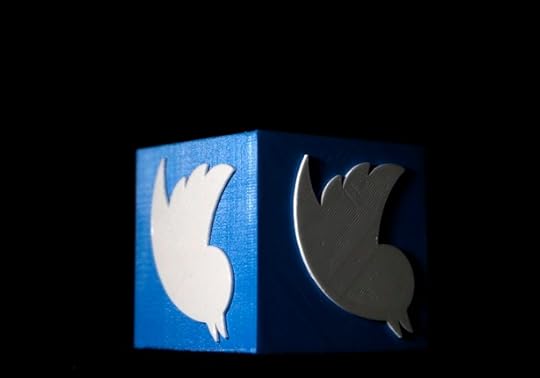
No More Twitter for the Internet's Self-Proclaimed 'Supervillain'
It’s notable that Jones’s public dealings with the trolls of Twitter came during the same week that saw Fox News chief Roger Ailes essentially fired (albeit with a $40 million golden parachute) after allegations made by Gretchen Carlson and other female Fox employees that he had sexually harassed them. It’s notable, too, how reminiscent the Ailes case is of Bill Cosby’s—both of them involving open secrets at once long known and long unacknowledged. Both involving “allegations” made and hedged.
Those people—allegedly—got away with what they did for so long because they assumed silence on the part of their victims: because they figured that the stigma against coming forward as a victim would be stronger than the desire for justice.
Trolls assume that suffering in silence will remain, as it so often has been before, the order of the day.
Internet trolls—at least the kind that have been spewing vitriol to Jones’s Twitter account—operate in a similar way. They wrap themselves, often, in the cloak of anonymity; they take refuge, even more often, in a widespread cultural ambivalence about victimhood. They assume that the people they harass will remain quiet—that suffering in silence, as it so often has been before, will remain the order of the day.
Well: No longer. Cosby’s women spoke up. Ailes’s women spoke up. And Leslie Jones spoke up. She used her fame on behalf of every person who has been harassed online, and on behalf of every person who has been harassed more broadly. “I think it happens to so many people,” Jones told Meyers. And as she pointed out, wrapping up her Late Night interview but participating in a much bigger conversation, “Hey, hate speech and freedom of speech: two different things.”

Jon Stewart's Well-Timed Comeback
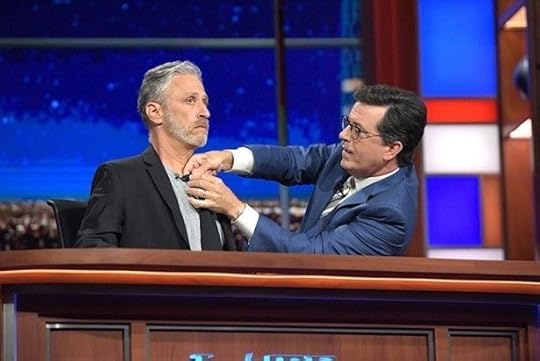
There are so many things that make this election season one without precedent. Why, then, has a faction of late-night punditworld responded with a reversion? Earlier this week, Stephen Colbert resurrected his satirical “Stephen Colbert” character, and then, last night, he invited the retired Jon Stewart to take over his Late Night desk for a classic 10-minute Daily Show rant. The biggest shock: The routines have felt vital and fresh, not mere nostalgia bait or retreads.
The reason for the throwback to golden-years Comedy Central fake news probably lies in politics itself. Stewart’s and Colbert’s original heydays were during the George W. Bush era; their entire personas are based not on indiscriminately satirizing the entire world’s absurdities but rather the particular absurdities of America’s right wing. Under Obama, that meant a certain amount of punching down. Donald Trump’s Republican National Convention, though, offered an even more unvarnished display of popular conservative thinking, attitudes, opinions, and bluster to hold America’s attention than, well, the last RNC. Colbert’s retitled program this week conveyed his glee at the prospect: “The 2016 Trumpublican Donational Conventrump Starring Donald Trump as the Republican Party* *May Contain Traces of Republican.” (His comparatively deflated DNC title: “The 2016 Democratic National Convincing, A Technically Historic Event: Death. Taxes. Hillary.”)
Stewart’s segment last night reminded of a lot of his virtues, and the most overlooked of them might be his ability to puncture ideological bubbles on both sides of the spectrum. His great muse, Fox News, is such an echo chamber for opinions that it led to "epistemic closure” becoming a buzz phrase to describe Republicans. But watching him take down Sean Hannity’s hypocrisies about Trump and Obama made me think about my own epistemic closure: When was the last time the average liberal-ish casual news consumer even had to remember Sean Hannity existed? Roger Ailes’s downfall is a reminder that Fox News has kept chugging along after Stewart left the air, and neither Trevor Noah, Samantha Bee, John Oliver, nor Seth Meyers have subjected the network to the same prolonged scrutiny that he did—which means a certain segment of America is simply less informed about what another segment of America is thinking about. On Colbert last night, Stewart flaunted his ability to take the long view on political rhetoric, to compare punditry from nearly a decade ago to today. It’s an accountability and information mission that’s perhaps been too neglected lately.
Also on display was Stewart’s particular brand of moral clarity. No one can use pure indignation for a punchline like him. (Funniest moment: Hannity calls Trump a “blue-collar billionaire”; Stewart pauses and says, “That’s not a thing.”) But also few comedians would feel comfortable speechifying like Stewart did toward the end of his segment last night. Again, his point was a Republican takedown—but also, fundamentally, a call for unity: “You feel you’re this country’s rightful owners. There’s only one problem with that. This country isn’t yours. You don’t own it. It never was. There is no ‘real America.’ You don't own it. You don’t own patriotism. You don’t own Christianity. You sure as hell don’t own respect for the bravery and sacrifice of military, police, and firefighters.”
His righteousness was so bracing that his fans can’t help but hope for him to become a regular again on TV. Then again, Stewart was so effective because he had the right message for the right time, and anyone who agrees with his worldview hopes that he won’t be needed more than ever in 2017.

The Mysterious Disappearance of Flight 370 Will Remain a Mystery
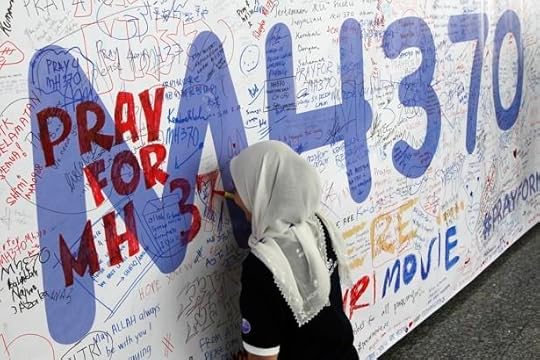
NEWS BRIEF The search for Malaysia Airlines Flight 370 is over.
The governments of Malaysia, Australia, and China said Friday they will suspend their investigations into the plane that mysteriously disappeared in March 2014.
Since the aircraft and its 239 passengers and crew vanished while flying from Kuala Lumpur to Beijing, the three countries have scoured the Indian Ocean where they thought it may have crashed. The governments did not say the search is over, but they acknowledged the hunt had stalled, and that unless new information arises before the end of the year, they will cease looking.
The Transport Minister of Malaysia, Liow Tiong Lai, said:
In the absence of new evidence, Malaysia, Australia and China have collectively decided to suspend the search upon completion of the 120,000-square-kilometer (46,300-square-mile) search area. ... Should credible new information emerge which can be used to identify the specific location of the aircraft, consideration will be given in determining next steps.
Costs for the search have climbed above $130 million, which makes it the most expensive in history. The countries have shared that responsibility, though there has been much frustration with Malaysia’s handling of the search, mostly from China, home to most of the passengers.
Some debris from the wreck has shown up in Mozambique, Maldives, and possibly Madagascar, but no one has found the plane’s main body, or its passengers. It is still a mystery why MH370 crashed in the first place.

Batman: The Killing Joke Predicted the Bleak State of Superheroes
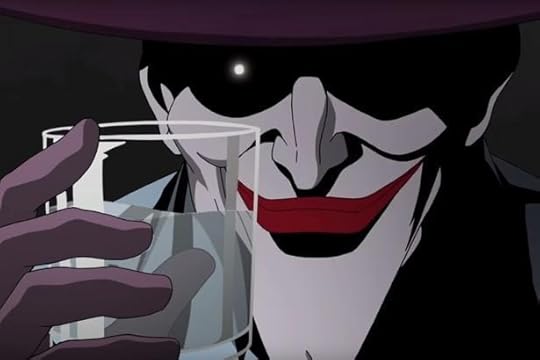
On first glance, the film Batman: The Killing Joke—which swings through theaters on July 25 for just two days before going to DVD—looks like it should’ve been consigned to afternoon television, with its choppy animation. But this new Batman feature isn’t for kids. The Killing Joke explains the origins of the Joker, Batman’s arch-nemesis, and plumbs beneath the face paint for a pathology. It’s sourced from a specific pool of graphic novels that were authored by one of two men—Frank Miller or Alan Moore—between 1986 and 1988. Their mission: to make superhero comics visible to adults by dialing up the darkness.
The dial, of course, got stuck. Acclaimed graphic novels like Miller’s The Dark Knight Returns (1986) and Batman: Year One (1987) as well as Moore’s Watchmen (1987) and Batman: The Killing Joke (1988) introduced a gloom that never quite lifted. They recast spandexed superheroes as violent vigilantes, and lowered them into atmospheres fraught with gravity, like the Cold War. “Miller and Moore are often credited with helping the superhero genre grow up,” wrote Jeet Heer recently in a smart piece for The New Republic, “although their idea of maturity at times seemed mainly to mean including explicit scenes of torture and rape.”
But it’s wrong to tie the thoughtful Moore too closely to the reactionary Miller. Moore’s celebrated series V for Vendetta posted a warning about Thatcherism and supplied the Occupy movement with a face. He turned a repudiated horror comic, Swamp Thing, into a repudiation of Reaganism. In 1988, he went so far as to form the publishing imprint Mad Love so that he could bring out a comic protesting homophobic English legislation. Compared to the rest of his work, then, The Killing Joke marked a regression. The last of the much-lauded graphic novels of the late ’80s, it exemplified traits that continue to bedevil the superhero genre today—misogyny, nihilism, and sadism for the sake of fanboys.
* * *
“The Killing Joke was not a project instigated by Alan,” writes the artist Brian Bolland in the afterword to the 2008 edition, “nor was it, as far as I know, a labor of love for him.” This is an unsurprising revelation. By the late ’80s, Moore, arguably the biggest name in comics, had stretched the concept of men in spandex as far as it could go. His 12-issue series Watchmen was looking a lot like the genre’s Citizen Kane, its Ulysses. Moore seemed to have consolidated everything that had come before, from Golden Age propaganda to pulpy ’50s horror, demonstrating effortless facility with the medium and its history, while reversing superhero cliches. “I’m not a Republic serial villain,” says the villain toward the end of Watchmen, in his Antarctic lair. (He’s been cornered by the heroes, who assume they’ve foiled his plot.) “Do you seriously think I’d explain my masterstroke if there remained the slightest chance of you affecting its outcome?” Unbeknownst to the heroes, he’s already wiped out New York.
In the superhero movies of today, of course, violence is a non-event. Cities are routinely incinerated, their faceless occupants vaporized out of frame. (Batman v. Superman: Dawn of Justice is a particularly egregious recent example of this.) But the obliteration of a major American city at the end of Watchmen was moving precisely because the previous 11 issues had acquainted readers with its citizens. Moore wisely reserved plenty of panels for the non-superpowered civilian, who doesn’t keep spandex under her clothes. It was at this point that the illustrator, Dave Gibbons, broke the nine-panel grid, the book’s dominant style, and used whole pages to pan across piled corpses. The images were devastating; form exploded to accommodate content’s blast radius.
The Killing Joke dispensed with such thoughtfulness. Batman’s nemesis, it turns out, was a struggling comedian who lost his pregnant wife the very same day he plunged into a vat at the local chemical plant—conveniently located next to the local playing-card company. (“All it takes is one bad day to reduce the sanest man alive to lunacy,” explains the Joker.) Running parallel to this over-determined origin is a present-day plot in which the Joker conspires to illustrate the “random injustice” of life. He shoots the character Batgirl in the spine, then trusses her father up in bondage gear, taunting him with photographs of his naked, paralyzed daughter. When the time came for his editor to sign off on the maiming, Moore recalled him saying, “Yeah, okay, cripple the bitch.” Later, Moore admitted, “It was probably one of the areas where they should’ve reined me in, but they didn’t.”
The man who helped create the conditions for cynical blockbusters like The Killing Joke was the first to reject the product.
You can trace the easy nihilism of many contemporary comics and movies—from Spawn to Kick-Ass—to cynical products like The Killing Joke. It’s the nihilism of a third-rate Nietzsche, the kind of starter-kit philosophy that compels adolescents. That Batman eventually gets his man and restores order is beside the point. Whether drawn by Bolland or played by Heath Ledger, the Joker, one senses, is the real draw of the story. Post-Moore, he became postmodern, the personification of moral relativism, of pure chaos. Post-9/11, he became an opiate; as Stephen Metcalf suggested at Slate in the wake of the Aurora shooting, the “charismatic malevolence” of characters like the Joker has become dangerously addictive in American culture.
Bolland, for his part, banged out a series of irresistible illustrations, including the iconic cover: a close-up of the Joker aiming a camera at the reader. The implication is that the reader occupies the position of the naked, crippled Batgirl. It’s the sort of iconography that’s best quarantined in dorm rooms, next to Scarface and Fight Club posters. Nevertheless, The Killing Joke attracted industry awards and admirers. Tim Burton and Christopher Nolan’s cinematic Jokers, played by Nicholson and Ledger, respectively, sprang like paper dolls from the pattern set by Moore. “I loved The Killing Joke,” Burton said. “It’s my favorite. It’s the first comic I ever loved.”
But read between the panels, and it’s hard not to feel the pressure of an unvoiced word balloon, inflated near to bursting: Moore’s own exhaustion with the arid genre he had helped terraform. Eventually, he disavowed The Killing Joke. “Brian [Bolland] did a wonderful job on the art but I don’t think it’s a very good book,” Moore told Barry Kavanagh in 2000. “It’s not saying anything very interesting.” In the ’90s, Moore labored over intricate graphic novels for adults, about anything other than superheroes. He researched Victorian England, and explored a conspiracy theory about Jack the Ripper and the Royal Family. He relocated Alice, Wendy, and Dorothy (of Wonderland, Neverland, and Oz) to an Austrian hotel on the cusp of World War I, and crafted an epic, controversial tome of erotica. When he finally returned to men in tights, he made a point of directing his energies to more innocent characters like Tom Strong, who radiated the warmth of the Golden Age of comics. Moore had innovated once again; “kids’ stuff” was no longer a knock against quality.
Moore’s disavowal, however, hasn’t exactly dissuaded paying customers. To meet demand, over 300 theaters have been added to the two-day showing of The Killing Joke, bringing the total count to 1,000 screens. Meanwhile, the graphic novel has already enjoyed the deluxe treatment; the 20th-anniversary edition comes swaddled in an introduction, afterword, rough sketches, and other dissertation aids. That’s the real joke, and it’s a killer: The man who helped create the conditions for cynical blockbusters like The Killing Joke was the first to reject the product—and did so decades ago. It turns out the superhero genre’s greatest hero was also in some ways its greatest villain.

Why Is Christine Lagarde Standing Trial?
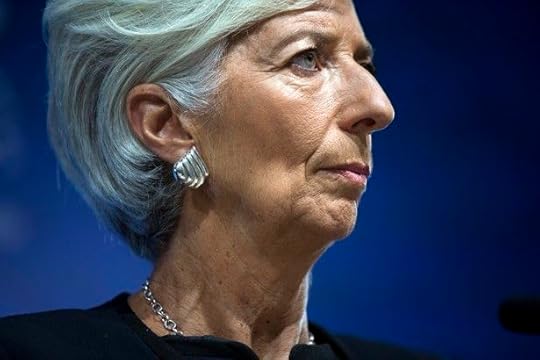
NEWS BRIEF The Cour de Cassation, France’s highest court, has ruled that Christine Lagarde, the managing director of the IMF, must stand trial over her role in a multimillion-dollar payout to Bernard Tapie, the tycoon, when she was finance minister in 2008.
At issue in the “Tapie affair” is the 285 million euros ($314 million) awarded to the tycoon, at the time an ally of President Nicolas Sarkozy, in his dispute with Crédit Lyonnais. Tapie had sued the bank, alleging it had undervalued his majority stake in Adidas when he sold it in 1993 to become a Cabinet minister under Francois Mitterand, the Socialist president. An appeals court ruled last year that Tapie should repay the amount.
Lagarde, the IMF’s managing director, was finance minister at the time. She was charged with negligence over the payout, a charge that carries a maximum of a year in prison and a fine. She will stand trial at the Cour de Justice, a court set up to try cases of ministerial misconduct. Patrick Maisonneuve, Lagarde’s lawyer, said in a statement cited by Bloomberg that he was “convinced that the court will find the allegations of negligence to be without merit.”
Still, the trial could be embarrassing for Lagarde, who began her second five-year term as the IMF’s managing director in February. She is the first woman to lead the fund and took over in 2011 following the resignation of Dominique Strauss-Kahn who was accused of sexual assault.
An IMF statement cited by the BBC said the Fund’s executive board had confidence in Lagarde’s ability to carry out her duties.

Mike Birbiglia's Quiet Ambition

Mike Birbiglia’s second feature film, Don’t Think Twice, opens in theaters across the country today. The movie concerns an improv troupe—played by Birbiglia, Gillian Jacobs, Chris Gethard, Kate Micucci, and Tami Sagher—that’s trying to work its way through the sudden success of one of its members (Keegan-Michael Key), after he’s cast on a Saturday Night Live-type show.
It’s a world with which Birbiglia is intimately familiar. He began his career in standup and improv comedy, received a big boost when he became a regular contributor to This American Life, and has since branched out into comic acting (Trainwreck), comi-dramatic acting (Orange Is the New Black), and directing.
Last month I had the chance to sit down and talk with Birbiglia at the Nantucket Film Festival. We discussed the ways he’s evolved as a director since his first feature, Sleepwalk With Me, and his ambitions for the future. This interview has been edited and condensed.
Christopher Orr: What I thought was most interesting about Don’t Think Twice is that it’s very much told from the perspective of the comedians who were sort of left behind—the ones who are still struggling while one of their close friends and colleagues makes a big career leap. But in real life, you’re the guy who’s become a big success.
Mike Birbiglia: I wrote the movie from the perspective of how all these different people are on stage with you improvising at once. This person’s done SNL, this person’s in movies, this person’s sharing a one-bedroom in Bushwick with five dudes on air mattresses. In relation to my own success, I think successful is not something I consider myself being. I think of myself as working. So some people view me as successful. Some people view me as unsuccessful.
I actually don’t see it in those terms. I only see it in relation to, if I’m able to work and the work is received well enough for me to make more work, then I’m doing what I want to do. The idea that for six months in my life I might be on the cover of Us Weekly or Rolling Stone, like, it doesn’t appeal to me. If it happens, then I’ll deal with that. But it’s certainly not what I’m aiming for, and I think it would be quite inconvenient actually.
Orr: Whatever success you’ve had, it’s been in a way that hasn’t required some of the sorts of obvious compromises that a lot of people make.
Birbiglia: People always say to me, "Well, I hope you get a sitcom someday.” Or, "I hope you get a TV series." And I’m like, "I don’t want one." I’m sent inquiries constantly, to the point where I went on Jimmy Kimmel once and he called the president of the network and said, "Give this guy a sitcom." And I had to say, "I don’t want that." I think we’re lucky enough to live in an era where you don’t have to have that kind of mass success to continue to create.
Orr: One way in which Don’t Think Twice is different from Sleepwalk With Me is that it’s obviously much more of an ensemble movie. And I was wondering if it was a new challenge for you to write all these other characters that had to live and breathe on their own and couldn’t just be foils for your character in one way or another?
Birbiglia: It was a huge challenge. I had all these readings at my house where we’d read the script aloud with writers and actors and we’d talk about it and eat pizza—and the pizza was excellent, and the script was sometimes good. But early on, Ira Glass [the host of This American Life] who is a close friend and who ended up being a producer, he was just like, “This isn’t a movie.” And I was like, “No, no, no, Ira, it’s The Big Chill except in the world of improv.” And he goes, "Okay, but if it’s that then the characters have to be more different from one another." At the time it was a lot of mes-talking-to-me kind of thing. And so a lot of my re-writing process was distinguishing these characters. And then fortunately I cast people who were remarkably different from one another. You couldn’t get any more different from Kate Micucci than Keegan-Michael Key.
Orr: I’m just picturing Keegan-Michael Key as Tom Berenger. I mean with the Big Chill comparison, was it that conscious that you have the one guy, the actor who made it big and sort of turned into a Magnum P.I.-type? He’s got this stupid TV show that nobody really likes but that’s made him really famous?
Birbiglia: I didn’t have that in mind. That’s very funny, though. I never thought in those terms, but now that you’re saying it, yes, there is certainly that comparison. I think there’s something about a certain type of ensemble movie from, like, the ’70s and ’80s that I’m really drawn to. To the point where I feel like I made this movie because I wanted to see this movie.
So we spent an enormous amount of the time in the edit pulling things away to respect the audience’s intelligence. Let’s pull out this reference so this character’s name isn’t said like 19 times just so you know who it is.
Orr: One of the things that drives me nuts is when a movie gives you no credit as a viewer. There will be a flashback, and it’s like “I remember that scene. It happened five minutes ago.”
Birbiglia: Gillian’s character in the movie, Sam, originally had more of a backstory in the script, to explain why she’s self-sabotaging in some ways. And you realize when you shoot the movie, the audience doesn’t need that. They get it. They relate to it.
Orr: I think backstory is one of the great banes of modern cinema. Obviously there are cases where you really need it. But then they remake Willy Wonka and his dad’s got to be a demented dentist. Willy Wonka is sui generis. He doesn’t need to have a demented dentist as a dad to make him love candy.
Birbiglia: Yeah, it’s frustrating, because Don’t Think Twice would’ve been “noted” to death in the studio system. They would say, “Jack needs to be more likable.” “Miles can’t be a womanizer.” “Sam needs to be more motivated.” Everything would have been sort of fluffed.
Orr: One thing I liked about the film was that the people were all recognizably human but nobody was a villain. Even Jack [the character who got the big SNL-type career break], he’s not made out to be a bad guy at all. I mean, he took an opportunity that almost anybody would take.
"My career could’ve gone in a very commercial and mediocre direction, and I feel like I dodged a bullet."
Birbiglia: Absolutely. Everybody in that group would’ve taken it.
Orr: So, you talked just a little bit about Ira Glass. How important do you feel This American Life has been to you?
Birbiglia: Ira Glass has made me better as a storyteller across the board. I mean, I’ve learned so much from him. And then This American Life has exposed me to a type of audience that really appreciates heartfelt handspun storytelling. For many years, I struggled to find an audience that fully appreciated what I was trying to do. I always thought, for years in my twenties, if I could just get on This American Life or somewhere in public radio I think people would get what I’m trying to do.
And, it’s true. I mean, this show in New York I just did, “Thank God for Jokes,” it ran for four months. 26,000 people came to the show. It was unbelievable. That’s like playing Madison Square Garden twice. Meanwhile, no one knows who the hell I am. Like if you say to a random person in the street, have you heard of Mike Birbiglia, they say no. Honestly, it’s great.
Orr: So how did you first hook up with This American Life?
Birbiglia: Through The Moth storytelling. I asked Catherine Burns, who’s the artistic director of The Moth, if she would send the audio of my sleepwalking story to This American Life. She said no. And then I asked again. And she said no again. I think the third time I asked her she agreed to do it.
And apparently once Ira and [This American Life producer] Julie Snyder heard it, it was like, we’re going to find a show for this. And things really changed for me. That was the year Sleepwalk With Me came out as a one-man show. And it was the first time I was on that radio show. And it really changed the direction of my entire career.
Orr: It goes back to what we were talking about earlier. You haven't found yourself in a position where in order to make a living you had to take a sitcom or be in Grown Ups 3 or whatever.
Birbiglia: I mean, my career could’ve gone in a very kind of commercial and mediocre direction and I feel like I dodged a bullet. Like, I had developed a sitcom pilot for a network like a year before. And it didn’t get picked up. I just dodged a great bullet by it not getting picked up.
So many of the things I’ve been able to do have come from Sleepwalk With Me. Like, Judd Apatow was a fan of Sleepwalk With Me so he stuck me in Trainwreck. I can think of a handful of things like that. Orange Is the New Black—I think [showrunner] Jenji Kohan knew me from This American Life and put me in that.
Orr: So, you do one-person shows, and comic film roles, and Orange Is the New Black, and, of course, directing. Of all those different career paths, is there one where you’re thinking, this is something I’d like to focus my attention on in the coming years?
Birbiglia: I think that the thing that I have to contribute is, you know, making one-person shows in a universe where there’s not a ton of one-person shows. And creating movies that are ensemble kind of Big Chill films in a marketplace where there aren’t any. And I think there should be. I think films that are funny and touching and from the heart—there should be more of them.
So, when I’m acting, like when I’m in Orange Is the New Black, or act in Trainwreck, a lot of it is apprenticing, you know, with great directors. Like, on Orange I got to work with Nicole Holofcener. With Trainwreck I got to work with Judd. When I did Your Sister’s Sister I got to work with Lynn Shelton. Even something like Hot Pursuit—I got to spend a day playing opposite Reece Witherspoon. That teaches me a lot. And so what I learn I bring in to the stuff that I’m creating. And I hope to create something great someday that is enduring and people watch and re-watch. I mean I’m a person who watches movies almost on a loop the way people listen to records.
Orr: Give me a few examples of movies that you’ve watched like this, over and over.
Birbiglia: Terms of Endearment I’ve watched probably 10 times. Broadcast News I’ve watched about six or eight times. Hannah and Her Sisters I’ve watched probably at least 10 times. Annie Hall I’ve watched 15 times. I mean, there’s Once. Oh my God. If I want to cry my eyes out I turn on Once.
So all this is to say, what can I contribute? I think I can make a handful of those movies when I get good enough. And I will say that Don’t Think Twice is closer to that than Sleepwalk With Me was. For me, it gives me the motivation to keep going and be like, "Oh, I could make one of those movies." Woody Allen made Annie Hall in his early forties. I’m 38 now.
Orr: You’re on the clock.
Birbiglia: I feel like I can make a few great movies in my forties if I’m lucky. I don’t know. We’ll see.

July 21, 2016
The NBA’s Reaction to North Carolina’s ‘Bathroom Bill’

NEWS BRIEF The NBA has decided to relocate the 2017 All-Star Game from Charlotte, North Carolina, because of the so-called “bathroom bill,” the league announced Thursday.
The law, known as HB2 and passed in March, requires people to use public restrooms that correspond to their gender at birth. Opponents of the bill said it targeted transgendered individuals and could lead to LGBT discrimination. In the months after, the NBA and the Charlotte Hornets have attempted to lobby the state legislature to change the law.
The NBA said the law does not match the “core values” of the league, which include “diversity, inclusion, fairness, and respect for others.” More from its statement:
While we recognize that the NBA cannot choose the law in every city, state, and country in which we do business, we do not believe we can successfully host our All-Star festivities in Charlotte in the climate created by HB2.
The NBA said it hopes to host the All-Star Game in Charlotte in 2019 if the law is overturned. The new location for the 2017 All Star Game will be announced in the coming weeks, the league said. Several cities, including New Orleans, New York, and Chicago, have been floated as possible replacements, NBA officials have said.

Exit, Roger Ailes
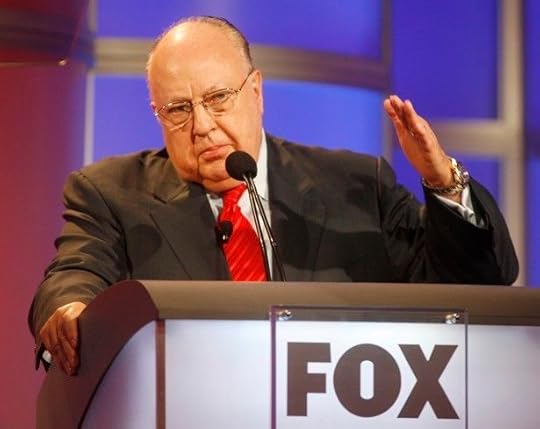
NEWS BRIEF Roger Ailes is out at Fox News with immediate effect.
Ailes resigned Thursday as chairman of Fox News in the wake of allegations of sexual harassment made by Gretchen Carlson, a former host on the network, the company announced.
“Roger Ailes has made a remarkable contribution to our company and our country,” Rupert Murdoch, who assumes the role of chairman and acting CEO of Fox News Channel and Fox Business Network, said in a statement. “Roger shared my vision of a great and independent television organization and executed it brilliantly over 20 great years.”
The statement did not mention the allegations of sexual harassment leveled at Ailes by Carlson and recent reports that other women at the network had made similar claims. The statement did not quote Ailes.
News of Ailes’s impending departure was first reported Monday by New York magazine’s Daily Intelligencer and on Tuesday by the Daily Beast, which said Ailes received a $40 million parachute to leave Fox News.
As my colleague Marina Koren reported on July 6:
Carlson alleges Ailes fired her from the network late last month because she refused his sexual advances, and because she complained to him about sexual harassment in the office. When Carlson met with Ailes to discuss treatment she considered offensive, the complaint alleges, Ailes told her, the lawsuit claims, they “should have had a sexual relationship a long time ago and then you’d be good and better and I’d be good and better,” adding that “sometimes problems are easier to solve” that way.
Here’s more from New York:
While Gretchen Carlson’s sexual-harassment lawsuit against Ailes sparked the investigation, sources say it has expanded into a wide-ranging inquiry into Ailes’s controversial management style. The interviews are now being conducted at Paul, Weiss’s midtown offices because of concerns that the Fox offices could be bugged, sources say. The lawyers are seeking to interview former female employees of Fox News in addition to current staff. They are also looking into the appropriateness of Ailes’s pressuring employees to speak out on his behalf, against his accusers.
Murdoch and his sons Lachlan and James, the co-chair and CEO, respectively, of Fox News’ parent company, had agreed Ailes must go, according to New York magazine. But they were reportedly divided over when: James Murdoch was said to want Ailes to be given a choice this week on whether to resign or be fired. Lachlan and Rupert Murdoch wanted no action taken until after this week’s Republican National Convention, which ends Thursday.
Ailes, 76, is a former aide to President Nixon. He has run Fox News since it was founded in 1996. Ailes has been accused by his liberal critics of tilting the network’s coverage to favor conservatives and the Republican Party, but the network dominates the cable news ratings.

Café Society and the Twilight of Woody Allen

Café Society, out in wide release this week, is not a good movie. Its plot is weak; its characters are flat; it seems to have no artistic or moral convictions save for its recognition that love can be really awkward and that Kristen Stewart can be really pretty—but all that seems, at this particular moment in the affairs of the world and in the career of Woody Allen, to be somehow beside the point. The movie premiered in May at Cannes, as the film festival’s opener. It was financed by Amazon—which paid a reported $20 million to secure the rights to it—as part of Amazon Studios’ bid to compete with Netflix and to establish its artistic legitimacy. Café Society has improved financially on Allen’s other recent work: Last weekend it earned $355,000 in theaters in New York and Los Angeles alone—enough to give it, according to Indiewire, “the biggest limited opening of 2016.”
Related Story
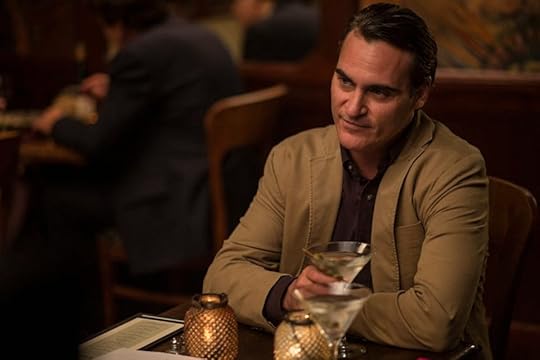
Woody Allen’s Dark, Tedious Fantasies
Woody Allen makes “pictures,” rather than movies; that alone might help to explain Café Society’s success. Allen is an icon not just of nebbishy narcissism, but also of the bygone age in which movies were one of the few, and most significant, mechanisms the culture had for talking to itself. Allen claims to reject nostalgia—“nostalgia is a trap,” he has said; “it’s a pleasant, sticky substance, like honey, that you fall into”—and yet his recent films, many of them dubbed by critics to be “love letters” to some forgotten dream, have gone to pains to celebrate what came before: the age when filmmakers were also auteurs; the age when a famous person could claim, with some degree of believability, not to read his own press; the age in which a documentary about a celebrity’s life could stay silent on the allegations, waged against him by his daughter, that he molested her when she was 7 years old.
Café Society, too, pulses with a palpable longing for that which was and will never be again. It is Allen’s love letter to Old Hollywood, or more precisely it’s another of Allen’s love letters to Old Hollywood. Set in the 1930s—the decade, perhaps not uncoincidentally, of Allen’s birth—it revolves around Bobby Dorfman (Jesse Eisenberg, serving again as an unsubtle stand-in for Allen himself), who leaves his home in the Bronx for Los Angeles, in search of a new job and a new life. Bobby relies on his uncle, the high-powered agent-to-the-stars Phil Stern (Steve Carell), to help him to settle in; Phil accomplishes this mostly by introducing Bobby to Vonnie (Stewart), Phil’s languid, limpid secretary. Bobby immediately falls in love with her. She does not return the sentiment. He goads her, though, into befriending him, and then into dating him, until … let’s just say that there’s a complication. Vonnie’s heart belongs to someone else.
Nothing in Café Society suggests anything resembling a message or a conclusion.
Café Society is a slight little love story, its central triangle made slightly more complicated by stories of the mob—Bobby’s brother (Corey Stoll, oozing charm) is a New York gangster—and by many, many not-terribly-funny jokes about being Jewish (“when a Jew cooks something,” Bobby says, solemnly, “it’s always overcooked, because they want to kill all the germs”). The film’s stars, as will so often be the case with an Allen film, give game performances (especially, this time around, Blake Lively, who plays another love interest for Bobby and makes the most of a sorely underwritten role). And everyone—as will so often be another case with an Allen film—seems, you know, really happy to be there.
But for all its beauty and its star power, the movie never elevates to anything beyond a kind of storyboard sketch. There’s love, and loss, and betrayal, and ego, and death ... yet none of these epic themes ever leap from the screen as full or human or even interesting. Everything here is beautiful and meaningless. Perhaps that is Allen’s point—his films have long been interested in existentialism and, lately, nihilism—but nothing in Café Society suggests anything resembling a message or a conclusion or, indeed, an artist who has much to say beyond (as Phil observes at one point): “In matters of the heart, people do foolish things.”
They do. Yes. And while that’s a truism that has animated the output of artists from Shakespeare to Austen to Kanye, “matters of the heart” have never, really, been Allen’s strong suit. True, his films feature characters (men, mostly) doing foolish things because of love (dating inappropriate women, largely). As my colleague Sophie Gilbert pointed out last year:
In 1996, at the age of 61, he successfully wooed the 29-year-old Julia Roberts in Everyone Says I Love You, the year after he had an affair with Mira Sorvino’s 20-something prostitute in Mighty Aphrodite. In 1979’s Manhattan, Allen’s 40-something character, Isaac, dates a 17-year-old schoolgirl played by Mariel Hemingway (the film is believed to be based on Allen’s real-life experiences dating 16-year-old Stacey Nelkin, whom he met on the set of Annie Hall and dated while she was attending Stuyvesant High School).
But the subtle give-and-take that guides deep human connection? The stuff that so often makes for good rom-coms, and for good literature? Allen dabbles in it, certainly, but he tends to return, like a tuft-headed boomerang, to his comfort zone: allegory. Slapstick. Sketch. Even Annie Hall, perhaps Allen’s best film and certainly the one that catapulted him to fame, had to evolve into the rom-com that it would become. Allen’s original vision for the film, his aforementioned documentary points out, was that it would focus on Alvy, with Annie as a more minor character; it was only in editing, and because of Diane Keaton’s manic charisma, that the film’s iconic rom-com structure emerged.
The generous reading of Allen’s work is that he’s suffered from the cruel paradox that will plague so many visionaries, in the end: His innovations have become so normalized that they now whiff of cliché. He was a visionary, many times over. Allen rose to fame around the same time, in the United States, that psychotherapy was becoming a standard mode of dealing with the world (one study found an eightfold rise in the number of psychologists who focused on mental health between 1950 and 1975); he channeled that shift, becoming a de facto mascot of the nation’s newfound awareness of its own mental impulses. “For God’s sake, Alvy,” exclaims a girl in Annie Hall, “even Freud speaks of a latency period!” This is a joke that could not have landed, with a wide audience, before the “me generation” came of age.
Allen conflates the “star” and the “hero.” Bobby wants, and Bobby deserves; for Allen, revealingly, those two things are indistinguishable.
So while Allen may not be, strictly, a member of that generation, his films embraced its aesthetics—and its ethics. If the ’70s were indeed awash, as was so often argued, in a culture of narcissism, then Allen was the bard of that culture. And that was, in large part, a very good thing. It led to films—Annie Hall, Manhattan, The Purple Rose of Cairo—that dared to assume what so many movies today take for granted: that individual introspection is a crucial element of culture. That awkwardness, individual egos colliding and tripping each other up, is a defining fact of human life. That the psychic alchemy that takes place as a person sits, silently, in a movie house as film crackles and rolls means that movies can legitimately tackle, and maybe even answer, some of life’s Biggest Questions. What does it all mean? Who, or what, is it all for? Why this, and why not that, and just why, why, why?
The later period of Allen’s career, though, saw a darker twist to those questions. It saw Allen moving away from the existential questions and toward more ethical ones. To what extent, Allen began wondering, audibly, can the mandates of morality really apply to the messiness of human life? To what extent are cheating—and betrayal—and murder—and abuse—wrong? To what extent can they be justified? To what extent must they be punished? If there’s a through line to Allen’s recent work, it is a deep—almost morbid—curiosity about what, precisely, a person can get away with.
Well. “Another bad movie” is one more thing Woody Allen has gotten away with. Café Society comes in the wake of Irrational Man and Magic in the Moonlight—similarly self-indulgent, similarly trivial. One of the biggest problems afflicting Café Society is the simple fact that Bobby, as a stand-in for the film’s creator—Allen narrates the movie, an unnecessary self-injection that will come as a surprise to precisely nobody—is distinctly unappealing both as a protagonist and as a person. He is blithely self-absorbed; he is smarmy; he is manipulative. Allen assumes, it seems, that Bobby’s centrality to the story means that he should, therefore, get what he wants—be it a job or a beautiful woman. He conflates “star” and “hero,” revealingly. Bobby wants, but more importantly Bobby deserves; and, for Allen, those two things are indistinguishable.
They have to be: Bobby pursues Vonnie so aggressively that her giving in to him reads not as a triumph of love, but rather as, well, giving in. It is an acquiescence, and her concession to his will is never questioned. It can’t be. Bobby has to be entitled to her; otherwise, Café Society’s already tenuous moral universe will succumb to the forces of its own smug entropy.
It’s hard, given Allen’s age, not to read that as a metaphor: the creator, in his twilight years. A portrait of the artist a no-longer-young man.
These attitudes—particularly given his daughter’s allegations against Allen—are uncomfortable for obvious reasons. They also suggest the less generous reading of Allen’s career: that the ground beneath him has shifted, and that he has proven either unwilling or unable to move along with it. The bard of narcissism is out of date.
The current age is defined, to be sure, by its own brand of self-inspection: the social media update, the selfie, the general sense that, whatever the orthography may have to say about it, there is totally an “I” in “team.” And yet it is also defined by the opposite: by a new sense, enabled by those same social media platforms, of community. People who used to be invisible to the culture at large are, via the workings of the digital world, suddenly less so; people who used to be unheard are raising their voices. Allen’s work has emphasized the primacy of the individual, often at the expense of the other individuals who may be about; that is another way that, at this moment, in this culture, it scans as distinctly retrograde. Café Society may be Allen’s first digital film; that, its Amazon backing notwithstanding, may be the film’s only faint nod to the future.
It’s perhaps fitting then that nearly every scene of the movie is washed—via its cinematographer, the great Vittorio Storaro—in the lovely side-light of the golden hour. The choice, at once subtle and pervasive, gives the film’s proceedings, whatever the time of day, whether characters are outside or in, the effect of perpetual sunset. And it’s hard, given Allen’s age, not to read that as a metaphor: the creator, in his twilight years. A portrait of the artist a no-longer-young man. Allen, early in his career, was obsessed with The Seventh Seal, Bergman’s masterpiece of cinematic existentialism; perhaps he has come to see himself, in his own way, as a knight who is cheating death. Perhaps the frenzied pace of Allen’s recent cinematic output—a movie a year, pretty much—is evidence of the artist trying, in the only way he knows how, to stay alive. It would make sense. The problem is that running is, like most other things in life, particularly difficult to do if the runner is constantly—stubbornly—looking backward.

Bojack Horseman Is TV's Smartest, Darkest Sitcom
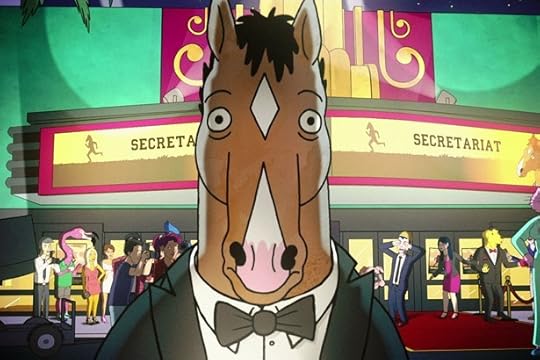
With Bojack Horseman preparing to release its third season on Netflix this Friday, it seems poised to claim the title of the smartest comedy on television. That triumph feels all the more significant considering its creatively exhausted premise: following the trials and tribulations of a former star trying to burnish his faded celebrity in Los Angeles. You’d think audiences would be sick of insider narratives about Hollywood narcissism in the wake of Curb Your Enthusiasm, Californication, Entourage, etc. But Bojack continues to inventively satirize its own industry, while deepening the anguish of its main cast, and building out its surreal, animated world in ways that dazzlingly reflect our own.
Like many Netflix shows, Bojack took a while to get going—the early episodes of its first season, mocking the booze-soaked life of a washed-up ’90s sitcom star who also happens to be a horse (Will Arnett), were too cutesy and clichéd. But the title character’s self-destructive misdeeds reached new highs and lows in the second season as he was cast in the title role of a Secretariat biopic. This year, Bojack is on the campaign trail looking to win an Oscar, giving the show even wider purview to mock the vapidity of the Hollywood publicity machine. But the best part of season three is how the show experiments with more and more bizarre ways of telling its story, without ever losing grip on the nuances of its ensemble’s disintegrating emotional states.
Bojack’s trump card is that it’s an animated series inspired by the designs of the terrific illustrator Lisa Hanawalt: It turns the well-trod territory of Hollywood’s corridors of power into a phantasmagoric wonderland of colorful animal-people and endless strange visual gags. Kangaroo bellhops pack suitcases into their pouches to carry them into hotels; a cat has a floating ball of yarn as a screensaver; a male seahorse gives birth to a new litter with practiced boredom. That constant creativity keeps Bojack from leaning too much on tired narratives of the flawed male protagonist, a genre that has only multiplied in the era of “Peak TV.” Bojack certainly is a flawed male protagonist, using booze and casual sex to keep his other demons at bay, but the show around him is so original it can get away with it.
Bojack Horseman continues to inventively satirize its own industry, while deepening the anguish of its main cast.
The show is also wise to move the focus from Bojack any time his self-pitying becomes overwhelming. It turns its attention instead to the ongoing marital trials of Bojack’s former biographer Diane (Alison Brie) and her husband Mister Peanutbutter (an ever-optimistic Labrador Retriever/game-show host); the efforts of Princess Carolyn (Amy Sedaris) to keep her burgeoning talent agency afloat; and the increasingly enigmatic Todd (Aaron Paul), a lazy pothead who sleeps on Bojack’s couch and unwittingly provides him with emotional support. The show is unafraid to take on bold digressions into topics like abortion, or the industry’s systemic racism. And every season finale it descends into utter bleakness, as the careful plotting of each character’s neuroses builds into a epic disaster.
That’s not to say Bojack isn’t also often riotously funny. Some of the third season’s best episodes are incredibly high-concept pieces of sitcom brilliance that hold an emotional gut-punch for the climax. In one, Bojack attends a film festival under the sea, a sort of Lost in Translation parody in which everyone is speaking an unintelligible fish language. A series of Buster Keaton-esque hijinks ensue as a silent Bojack tries to make his way to a theater and is beset with countless underwater obstacles. Another episode flashes back to 2007 to set up many of the cast’s initial meet-cutes, loading the script with jokes and fashion cues specific to that annum. Yet another recalls its story in piecemeal flashbacks as Bojack tries to cancel a newspaper subscription, recalling various ways in which the delivery of the fictional Los Angeles Gazette has affected his life over the previous months.
After the first few manic episodes, which seem almost entirely disconnected from each other, the season’s various threads finally begin to come together, and its depressing twists start taking shape on the horizon. Bojack is part soap opera, part self-referential industry satire, and part gonzo animated acid trip—but somehow it merges all those influences into one touching, grounded tale of damaged people trying desperately to cling on to each other even as they self-combust. Amid all that, it still always manages to find hints of lightness and humor. Bojack is a colorful, antic rollercoaster headed for a collision with a brick wall, but its third season nonetheless proves it’s always worth the ride.

Atlantic Monthly Contributors's Blog
- Atlantic Monthly Contributors's profile
- 1 follower



